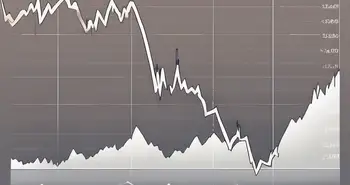Turn Losses into Gains: The Easy Guide to Tax-Loss Harvesting

Tax-loss harvesting is a strategy that savvy investors use to mitigate their tax liabilities while also optimizing their portfolio returns. This comprehensive guide will explore the ins and outs of tax-loss harvesting, helping you understand how you can implement it effectively to maximize your savings. Let’s dive in!
Understanding the Basics of Tax-Loss Harvesting
What is Tax-Loss Harvesting?
In simple terms, tax-loss harvesting is the practice of selling securities at a loss to offset capital gains taxes on other investments. Imagine you bought shares in a company for $1,000, but after some time, their value drops to $700. By selling these shares, you realize a loss of $300. This loss can be used to offset gains you might have realized elsewhere in your portfolio.
For example, if you made a profit of $500 from another investment, your $300 loss can reduce your taxable income from that gain to $200. This is an effective way to reduce your overall tax bill. Additionally, if your losses exceed your gains, you can use up to $3,000 of that excess loss to offset ordinary income, such as wages or salaries, further lowering your tax liability. Any remaining losses can be carried forward to future tax years, providing continued tax benefits down the line.
The Importance of Tax-Loss Harvesting in Investment Strategy
Tax-loss harvesting plays a critical role in many investors' financial strategies. Not only does it provide the means to lower taxes, but it also offers an opportunity for rebalancing. By selling underperforming assets, you have the chance to reinvest those funds in better-performing opportunities, enhancing your overall portfolio health. This proactive approach can help maintain your desired asset allocation, ensuring that your investments align with your risk tolerance and financial goals.
It's important to remember that tax-loss harvesting isn't just a year-end activity. It can be applied throughout the calendar year. Staying vigilant about your investments can lead to smarter decisions and substantial savings when tax season rolls around. Moreover, investors should be aware of the “wash sale” rule, which disallows the deduction of a loss if you repurchase the same or substantially identical security within 30 days. Understanding this rule can help you navigate tax-loss harvesting effectively and maximize your tax benefits without running afoul of IRS regulations.
The Mechanics of Tax-Loss Harvesting
How Does Tax-Loss Harvesting Work?
The mechanics of tax-loss harvesting involve several key steps. First, identify the securities in your portfolio that are underperforming. Next, sell these assets to realize the loss. It’s essential that you carefully track your gains and losses throughout the year so you can make informed selling decisions.
Once you sell a security at a loss, you can then reinvest those funds. However, maintaining proper documentation and understanding the tax implications of these trades is crucial to successfully implementing this strategy. Tax-loss harvesting is not just a one-time event; it requires ongoing monitoring of your investments and a keen eye on market trends. By regularly assessing your portfolio, you can make timely decisions that maximize your tax benefits while keeping your investment strategy aligned with your financial goals.
Key Components of Tax-Loss Harvesting
- Realized Losses: These are the losses you incur by selling an asset for less than its purchase price.
- Offsetting Gains: If you have realized gains elsewhere, you can use losses to offset those gains, thus reducing your taxable income.
- Replacement Strategy: After selling a security, consider purchasing a similar, but not identical, investment to maintain your portfolio’s asset allocation.
Understanding the nuances of these components can significantly enhance the effectiveness of your tax-loss harvesting strategy. For instance, realized losses can be carried forward to future tax years if they exceed your gains, providing you with a potential tax shield in subsequent years. Moreover, the replacement strategy is particularly vital; it not only helps in maintaining your investment exposure but also ensures compliance with the IRS's wash-sale rule, which disallows the deduction of a loss if you repurchase the same or substantially identical security within 30 days. This careful navigation of rules and strategies can lead to substantial tax savings over time.
Additionally, tax-loss harvesting can be particularly beneficial in volatile markets where price fluctuations can create opportunities for realizing losses. Investors who actively engage in this practice may find that they can offset gains from other investments, such as stocks or mutual funds, thereby lowering their overall tax burden. This proactive approach to tax management not only enhances the after-tax returns of your portfolio but also encourages a disciplined investment strategy that can lead to better long-term financial outcomes.
The Benefits of Tax-Loss Harvesting
Reducing Taxable Income
One of the most significant advantages of tax-loss harvesting is the ability to reduce your taxable income. By strategically selling losing investments, you can lower your tax bracket in a given year, which can lead to substantial savings over time.
For instance, if your total capital gains for the year are $10,000 and your realized losses amount to $3,000, you'll only pay capital gains tax on $7,000, thus keeping more money in your pocket.
Enhancing Investment Returns
Tax-loss harvesting doesn't just save you money; it can also enhance your investment returns. When you sell a losing investment, you can reinvest in assets that may provide better growth opportunities. This strategy not only prevents assets from dragging down your portfolio but can also lead to a more robust investment strategy.
Consider an investor who sold a lagging tech stock and used the proceeds to purchase shares in a up-and-coming renewable energy company. The potential for higher returns through wise reinvestment is one of the strategies that makes tax-loss harvesting so valuable.
Implementing Tax-Loss Harvesting in Your Financial Plan
When to Consider Tax-Loss Harvesting
The best time to consider tax-loss harvesting is typically during market downturns, as this is when your investments are most likely to be trading below their purchase prices. However, this strategy doesn’t have to be reserved solely for times of loss. Regularly review your portfolio's performance, even during bullish markets.
It's also a good idea to consult with a financial advisor who can help you time your moves effectively. Not every loss needs to be sold; understanding when a security's decline is temporary versus a long-term trend is critical.
Steps to Implement Tax-Loss Harvesting
- Monitor Portfolio Performance: Regularly track the performance of your investments.
- Identify Losses: Look for unrealized losses that may be suitable for harvesting.
- Execute Sales: Sell the underperforming assets to realize the losses.
- Reinvest Wisely: Use the proceeds to purchase alternative investments.
- Document Transactions: Maintain comprehensive records for tax reporting purposes.
Potential Risks and Limitations of Tax-Loss Harvesting
Understanding the Wash-Sale Rule
The wash-sale rule is a critical concept you must understand when engaging in tax-loss harvesting. According to this IRS rule, if you sell a security at a loss and then repurchase the same or substantially identical security within 30 days, you cannot claim the loss for tax purposes.
This means investors need to be strategic about the timing of their buys and sells. A good approach is to consider similar investments to replace the securities you sold, ensuring you don't fall foul of the wash-sale rule while still maintaining your exposure to the market.
Potential Drawbacks of Over-Harvesting
While tax-loss harvesting can be beneficial, over-harvesting can lead to negative consequences. Excessively selling assets to realize losses might disrupt your investment strategy, lead to unwanted tax bills in the future, or increase transaction costs.
Moreover, constantly selling can affect your long-term investment goals, as it may drive emotional decision-making rather than rational investing. Therefore, it’s vital to strike a balance and consider the long-term implications of your actions.
Frequently Asked Questions (FAQ)
What is tax-loss harvesting?
Tax-loss harvesting is the process of selling investments at a loss to offset capital gains taxes, thereby reducing your taxable income.
Why is tax-loss harvesting important?
It helps investors save money on taxes while providing the opportunity to improve their investment portfolio by reinvesting in better-performing assets.
How can I implement tax-loss harvesting?
By regularly monitoring your portfolio’s performance, identifying losses, executing sales, and reinvesting wisely while keeping track of the IRS wash-sale rule.
What are the risks of tax-loss harvesting?
The primary risks include falling under the wash-sale rule and the potential drawbacks of over-harvesting, which can negatively impact your investment strategy.
In conclusion, tax-loss harvesting is a powerful tool that can enhance your financial strategy while minimizing your tax burden. By understanding how it works and applying it thoughtfully, you can enjoy increased savings and improved investment returns.
Ready to take your investment strategy to the next level with tax-loss harvesting? Morpher.com is here to revolutionize your trading experience. With zero fees, infinite liquidity, and the ability to trade across a multitude of asset classes, Morpher empowers you to maximize your savings and investment returns. Embrace the future of trading with fractional investing, short selling, and up to 10x leverage, all while maintaining safety and control with the Morpher Wallet. Don't miss out on this unique opportunity to transform your portfolio. Sign Up and Get Your Free Sign Up Bonus today and start trading like never before!

Disclaimer: All investments involve risk, and the past performance of a security, industry, sector, market, financial product, trading strategy, or individual’s trading does not guarantee future results or returns. Investors are fully responsible for any investment decisions they make. Such decisions should be based solely on an evaluation of their financial circumstances, investment objectives, risk tolerance, and liquidity needs. This post does not constitute investment advice.

Painless trading for everyone
Hundreds of markets all in one place - Apple, Bitcoin, Gold, Watches, NFTs, Sneakers and so much more.

Painless trading for everyone
Hundreds of markets all in one place - Apple, Bitcoin, Gold, Watches, NFTs, Sneakers and so much more.








